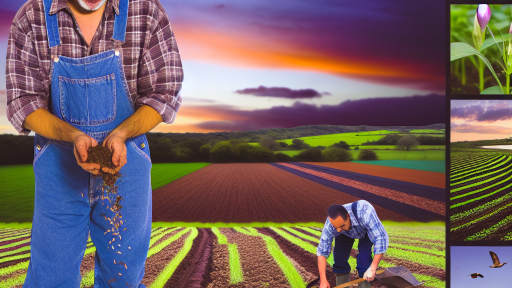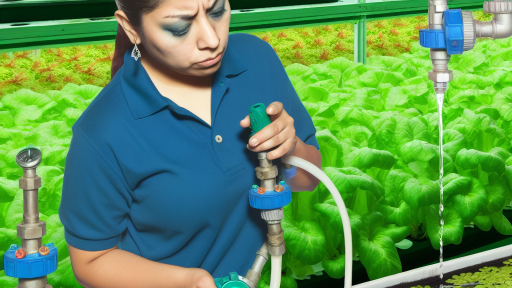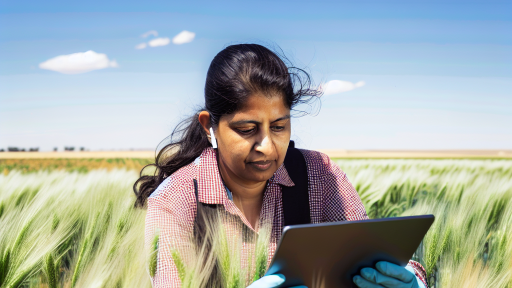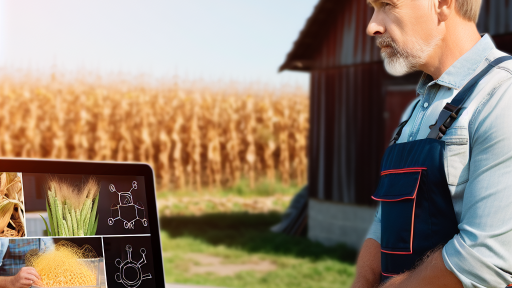Introduction to Pest and Disease Forecasting in Agriculture
Pest and disease forecasting plays a critical role in modern agriculture.
It utilizes scientific technologies to predict infestations and outbreaks.
Farmers can make informed decisions based on these predictions.
Effective forecasting enhances crop yield and reduces losses.
The Importance of Early Detection
Early detection of pests and diseases can prevent widespread damage.
Farmers can implement control measures before problems escalate.
This proactive approach minimizes the use of pesticides and chemicals.
Furthermore, it helps maintain ecological balance in farming.
Technological Advancements in Forecasting
Recent advancements in technology have revolutionized pest and disease forecasting.
Data analytics and machine learning algorithms are now commonly used.
These technologies allow for greater accuracy in predictions.
Additionally, satellite imagery and drones enhance monitoring capabilities.
The Role of Weather Data
Weather patterns significantly influence pest and disease outbreaks.
Forecasting models incorporate real-time weather data for accuracy.
For instance, temperature and humidity play crucial roles.
Transform Your Agribusiness
Unlock your farm's potential with expert advice tailored to your needs. Get actionable steps that drive real results.
Get StartedUnderstanding these factors helps farmers prepare for potential threats.
Case Studies and Applications
Numerous successful case studies illustrate the benefits of forecasting.
For example, a vineyard in Napa Valley utilized forecasting tools effectively.
They reduced their fungicide application by 40% through accurate predictions.
Such strategies not only save costs but also promote sustainable practices.
Future Trends in Pest and Disease Forecasting
The future of forecasting lies in advanced technologies and data integration.
Artificial intelligence is expected to revolutionize prediction methods.
Moreover, real-time monitoring systems will enhance response times.
Collaboration between farmers, researchers, and tech companies will drive innovation.
Importance of Accurate Forecasting for Crop Management
Enhancing Decision-Making
Accurate forecasting significantly improves decision-making for farmers.
It allows them to allocate resources efficiently and plan cropping schedules.
By anticipating pest and disease outbreaks, farmers can act promptly.
This proactive approach minimizes potential crop losses.
Reducing Economic Impact
Timely forecasts help reduce the economic impact of pest and disease threats.
Farmers can minimize losses by applying targeted control measures.
Consequently, they can enhance their overall profitability.
Moreover, effective forecasting aids in budget planning and management.
Promoting Sustainable Practices
Accurate forecasting promotes sustainable agricultural practices.
It encourages integrated pest management strategies.
Farmers can apply fewer chemicals by targeting necessary treatments.
This approach protects beneficial insects and the ecosystem.
Improving Crop Quality
Forecasting helps maintain high crop quality.
Healthy crops have a better market value and appeal to consumers.
Farmers can take preventive actions to protect their yield integrity.
Showcase Your Farming Business
Publish your professional farming services profile on our blog for a one-time fee of $200 and reach a dedicated audience of farmers and agribusiness owners.
Publish Your ProfileUltimately, quality produce contributes to a sustainable market.
Overview of Advanced Tools and Technologies Used in Forecasting
Introduction to Pest and Disease Forecasting
Pest and disease forecasting relies on accurate predictions for effective management.
Advanced tools enhance the precision of these forecasts.
Consequently, agricultural productivity and sustainability improve significantly.
Remote Sensing Technologies
Remote sensing plays a vital role in monitoring crops.
Satellite imagery provides comprehensive data on plant health.
This technology allows for timely detection of pest infestations.
Aerial drones offer high-resolution images for localized monitoring.
Applications of Remote Sensing
Farmers can track changes in vegetation indices over time.
Such tracking helps identify stress indicators in crops.
Additionally, this data can predict the likelihood of pest outbreaks.
Machine Learning and Predictive Analytics
Machine learning enhances forecasting precision by analyzing patterns.
These models process large datasets effectively.
As a result, they provide predictions based on historical data.
For instance, algorithms can predict disease outbreaks with high accuracy.
Key Benefits of Machine Learning
These tools enable automated decision-making processes.
Farmers benefit from tailored management strategies based on predictions.
Ultimately, this leads to reduced pesticide use and higher yield quality.
Climate Modeling Tools
Climate models assess environmental factors affecting pest and disease dynamics.
For instance, temperature and humidity levels influence outbreaks significantly.
By simulating different climate scenarios, farmers can prepare accordingly.
Importance of Climate Adaptation
Adapting to climate forecasts enhances resilience in agriculture.
This proactive approach helps mitigate risks associated with pests and diseases.
Moreover, it fosters sustainable agricultural practices for the future.
Mobile and Web Applications
Mobile applications offer real-time data access to farmers.
Farmers can receive alerts about potential threats directly on their devices.
This accessibility empowers quick response to emerging pest issues.
Features of Modern Applications
Many applications include interactive maps for visual data representation.
They also provide recommendations based on current pest activity.
Such features ensure informed decision-making in pest management.
Collaborative Platforms and Networks
Collaboration among researchers, farmers, and organizations enhances knowledge sharing.
Online platforms facilitate the exchange of insights and best practices.
This collective knowledge improves forecasting outcomes significantly.
Partnerships can strengthen community resilience against pest threats.
Delve into the Subject: Latest Advances In Crop Monitoring Technologies
Role of Data Analytics in Pest and Disease Prediction
Importance of Data Collection
Data collection forms the backbone of effective pest and disease prediction.
Accurate data allows for informed decision-making in agriculture.
Farmers can utilize multiple sources of data for better predictions.
- Weather patterns
- Soil conditions
- Pest population dynamics
Integrating these data sources enhances prediction accuracy.
Analytical Techniques in Use
Various analytical techniques empower pest and disease forecasting.
Showcase Your Farming Business
Publish your professional farming services profile on our blog for a one-time fee of $200 and reach a dedicated audience of farmers and agribusiness owners.
Publish Your ProfileMachine learning models analyze historical data to identify patterns.
These models can predict potential outbreaks before they occur.
- Regression Analysis
- Time Series Analysis
- Geospatial Analysis
Utilizing these methods improves response strategies for farmers.
Real-Time Monitoring Systems
Real-time monitoring systems provide immediate insights into pest activity.
Farmers can track changes in pest populations swiftly.
This technology often includes automated alerts for proactive measures.
For instance, drones can collect data from remote areas.
These insights allow for timely interventions to protect crops.
Benefits of Predictive Analytics
Predictive analytics offers several advantages in pest management.
It reduces the need for chemical applications, promoting sustainability.
Farmers can optimize resource allocation effectively.
This approach minimizes economic losses due to pest damage.
Effective prediction supports healthier crop yields.
Collaboration and Knowledge Sharing
Collaboration among stakeholders enhances data analytics efforts.
Agricultural researchers and farmers can share valuable insights.
Technology providers also play a crucial role in this ecosystem.
- Creating user-friendly software
- Providing training on data utilization
Such collaboration fosters a more resilient agricultural sector.
Find Out More: Effective Storage Solutions for Fresh Produce
Integration of Remote Sensing and GIS in Forecasting
Importance of Remote Sensing
Remote sensing offers vital data for pest and disease dynamics.
It captures images of crops and landscapes from various satellites.
This technology enables real-time monitoring of agricultural fields.
Furthermore, it helps identify potential pest and disease outbreaks early.
The Role of GIS
Geographic Information Systems (GIS) provide powerful analytical tools.
GIS merges various data sources for better decision-making.
This integration allows for effective resource management in agriculture.
Moreover, GIS helps visualize spatial relationships among variables.
Combining Remote Sensing with GIS
The integration of remote sensing and GIS enhances forecasting accuracy.
Through this combination, users can analyze large datasets efficiently.
This approach allows for predictive modeling of pest infestations.
Consequently, it aids farmers in planning precautionary measures.
Case Studies in Agriculture
Several studies demonstrate the benefits of this integration.
One study focused on coffee crops in Colombia, using satellite imagery.
This study successfully predicted coffee leaf rust outbreaks.
Similarly, a project in California examined grapevine diseases.
It utilized multispectral data to forecast powdery mildew occurrences.
Future Directions
The future looks promising for these technologies in agriculture.
Investments in advanced sensors can enhance data quality.
Additionally, machine learning models can process this data effectively.
As a result, farmers can receive more accurate, timely forecasts.
Find Out More: Integrated Pest Management Forecasting Techniques
Showcase Your Farming Business
Publish your professional farming services profile on our blog for a one-time fee of $200 and reach a dedicated audience of farmers and agribusiness owners.
Publish Your Profile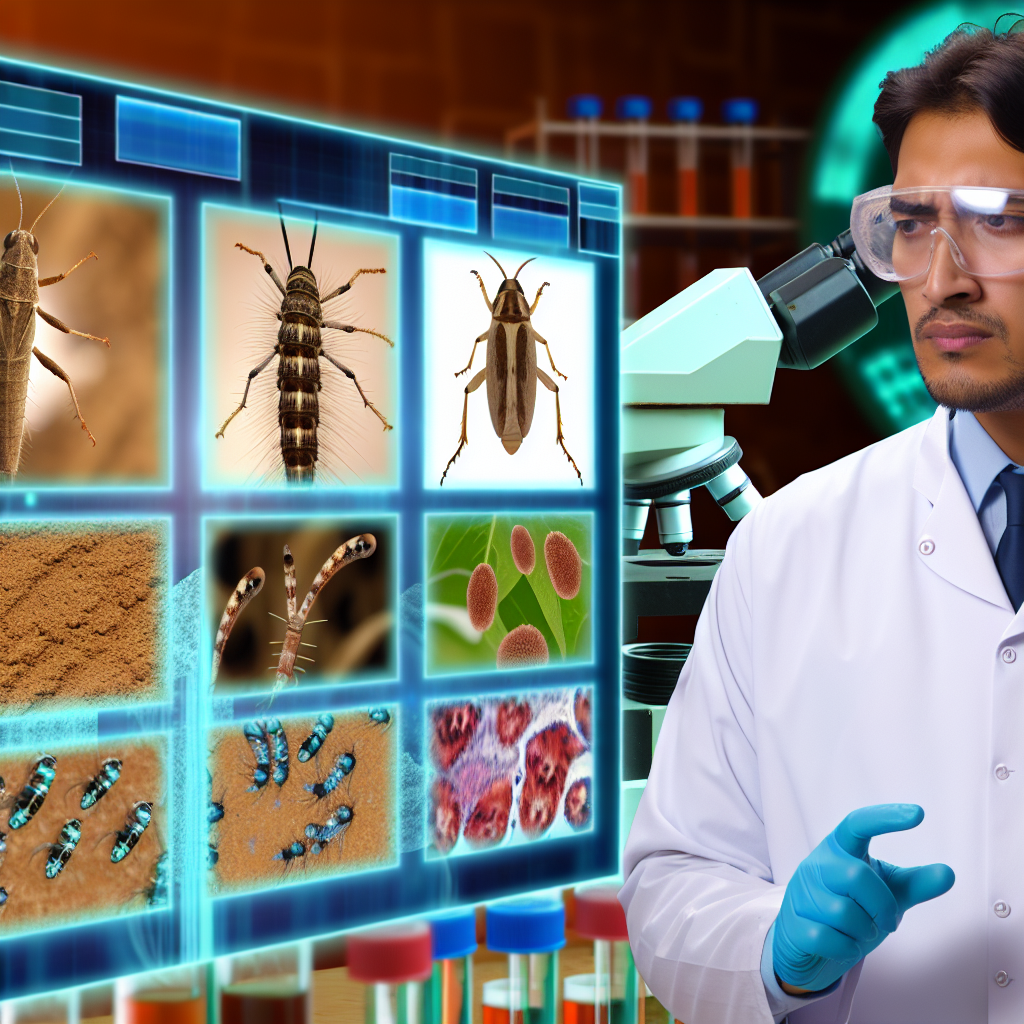
Case Studies: Successful Implementations of Forecasting Tools
Introduction to Case Studies
Case studies offer valuable insights into successful applications of forecasting tools.
They demonstrate how technology can enhance pest and disease management.
Moreover, examining these examples provides inspiration for future projects.
Implementation in Vineyards
In Napa Valley, Harvest Analytics implemented a forecasting tool for vineyards.
They utilized weather data to predict outbreaks of powdery mildew.
This proactive approach reduced fungicide applications by 30%.
Consequently, vineyard yields improved significantly.
Innovative Approaches in Orchards
In Michigan, Orchard Tech adopted a new forecasting model for apple orchards.
This model combined historical data and real-time weather information.
As a result, they accurately forecasted apple scab outbreaks.
The prediction allowed farmers to spray fungicides more efficiently.
Farmers experienced a 20% increase in overall fruit quality.
Success in Row Crops
In Illinois, CropGuard introduced a comprehensive forecasting system for corn and soybean fields.
The system analyzed soil moisture levels and pest populations.
Farmers received timely alerts for potential pest invasions.
Consequently, pest-related crop losses decreased by 25%.
This improvement boosted overall harvest profitability.
Collaboration with Research Institutions
Furthermore, many successful implementations involve collaboration with research institutions.
For example, AgroForecast partnered with local universities in Virginia.
They developed a forecasting tool tailored to regional pest dynamics.
This partnership enhances the accuracy of predictions and recommendations.
As a result, local farmers are more equipped to combat pest threats.
Integration of Mobile Applications
Additionally, some companies have embraced mobile technology for pest management.
PestWatch launched a mobile app for farmers in California.
The app provides real-time updates on pest forecasts and management strategies.
As a result, farmers can make informed decisions on-the-go.
This convenience encourages proactive pest and disease management practices.
See Related Content: Leveraging Big Data For Crop Management Success
Challenges and Limitations in Current Forecasting Techniques
Data Reliability
Data quality often hampers accurate forecasting.
Inaccurate or outdated information can lead to poor predictions.
Additionally, environmental variability affects data consistency.
Reliable data collection is essential for effective analysis.
Model Complexity
Many forecasting models are overly complex.
This complexity makes them difficult to interpret.
As a result, stakeholders may struggle to make informed decisions.
Moreover, simpler models can sometimes yield equal or better accuracy.
Technological Limitations
Current technology can impose restrictions on data analysis.
Some tools lack the capacity to handle large datasets efficiently.
Additionally, software can become outdated quickly.
This limits the potential for innovative forecasting solutions.
Showcase Your Farming Business
Publish your professional farming services profile on our blog for a one-time fee of $200 and reach a dedicated audience of farmers and agribusiness owners.
Publish Your ProfileIntegration Challenges
Integrating various data sources remains problematic.
Disparate systems often lack compatibility with one another.
This fragmentation can obscure valuable insights.
Consequently, organizations must invest in better integration tools.
Uncertainty and Variability
Pest and disease forecasting inherently involves uncertainty.
Unpredictable climate conditions further complicate predictions.
Many models struggle to account for these variations effectively.
Consequently, stakeholders may find it hard to trust the forecasts.
Resource Constraints
Limited resources often restrict effective forecasting efforts.
Many organizations lack the funds for advanced tools and technologies.
This limitation can create disparities in forecasting accuracy.
Without sufficient investment, accurate predictions remain elusive.
Future Trends in Pest and Disease Forecasting Technologies
Integration of Artificial Intelligence
Artificial intelligence is transforming pest and disease forecasting.
AI algorithms analyze data from multiple sources effectively.
This integration enhances prediction accuracy significantly.
Farmers can receive timely alerts for potential threats.
Moreover, AI optimizes resource allocation for pest control.
Use of Remote Sensing Technologies
Remote sensing provides real-time insights into crop health.
Satellite imagery detects early signs of pest infestation.
Drones can survey large agricultural areas rapidly.
This technology ensures localized and precise interventions.
Consequently, farmers can respond faster to emerging issues.
Leveraging Big Data Analytics
Big data analytics offers vast potential for improving forecasts.
It aggregates information from weather patterns, soil health, and pest behavior.
By analyzing large datasets, patterns become clearer.
Predictive models can forecast outbreaks with greater certainty.
Consequently, stakeholders make informed decisions based on data-driven insights.
Development of Mobile Applications
Mobile applications are becoming essential tools for farmers.
They provide access to real-time pest and disease information.
Farmers can receive alerts and manage threats on-the-go.
This enhances their decision-making capabilities in the field.
Ultimately, mobile tech promotes a proactive approach to farming.
Advancements in Biotechnology
Biotechnology is evolving pest and disease management techniques.
Genetically modified organisms can provide resistance to pests.
This innovation reduces dependency on chemical pesticides.
Furthermore, biocontrol agents are gaining popularity among farmers.
These advancements lead to sustainable agricultural practices.
Additional Resources
Plant Protection Today: PPQ Develops a Modeling Framework To …

